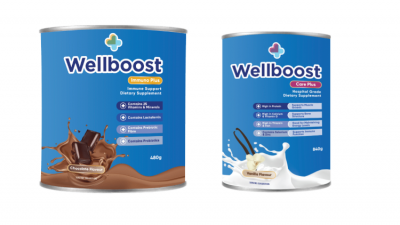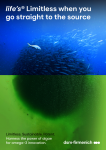Omega-3 from sea microorganisms: CSIRO, Pharmamark tap on new sources for infant and general nutrition

The two parties recently signed an 18-month partnership agreement.
One of the goals, is to find out if omega-3 fatty acids DHA, EPA, and DPA could be extracted from microorganisms found in Australia’s seas and mudflats, Guy Drummond, CEO of Pharmamark told NutraIngredients-Asia.
The Brisbane-based company provides micro-encapsulated fatty acids, specifically DHA from algae, ARA from fungi, and tuna oil, for use in infant and general nutrition.
The partnership will allow the company to offer fatty acids nutrients from different sources, in this case, sea microorganisms, specifically algae, to manufacturers.
Aside from omega-3, Drummond said the partnership would explore the extraction of omega-6 from microorganisms, as well as using the entire sea algae as a source of protein.
“What we are wanting to develop, is not only the omega-3 and omega-6 oils from the microbes, we are also looking for other bioactives, including protein, from the sea microorganisms” he said.
Benefits
The company believes that using sea microorganisms as a source of fatty acids and protein would be more sustainable than depending on fish oil and farmed crops.
This is because the sea microorganisms could be grown through fermentation via a controlled environment.
In addition, it is already a commercial practice to use omega-3 from algae in infant and human nutrition products.
“There is already a lot of algae oil being used in infant and human nutrition products, so the science has been established for a long time,” he said.
DSM for example, had launched algae-sourced DHA and ARA this April, targeting the infant nutrition market.
Lastly, the price of omega-3 from algae is now more affordable than before.
Drummond pointed out that at present, DHA from algae is approaching two times more expensive than fish oil based on comparative fatty acids. Five years ago, it was about four or five times more costly.
He said this was due to the use of more efficient production methods, leading to higher yield of DHA. Another reason is due to the development of new algae strains in which a higher concentration of DHA could be extracted.
The partnership with CSIRO was expected to only be the first phase of a project that would last for several years.
“We sign the partnership for 18 months, but my expectation is that the agreement will continue for several years,” he said.
Omega-3 in demand
Due to changes in regulatory requirements, there is now a higher market demand for omega-3, specifically DHA.
“DHA is a very important ingredient for infant nutrition. There has been a growth in demand for DHA from both algae and fish sources due to changes in regulations,” Drummond said.
He gave the example of European regulator EFSA, which mandated the doubling of DHA level in infant formula in February this year. According to EFSA, all infant and follow-on formulas sold in EU must now contain 20 to 50mg of DHA/100kcal.
This level of DHA is higher than what is typically reported in breast milk and the level found in many current infant formula products.
Another example is China, where the regulator had drafted a policy for increasing the level of DHA in infant formula two years ago.
In this case, the permitted DHA levels increased from less than or equal to 0.5% of total fatty acids per 100kJ, to 3.6 to 9.6mg per 100kJ. The new draft is not yet passed.
Formulation challenges
As with the conventional fish oil, Drummond said that there would also be formulation challenges incorporating omega-3 and other fatty acids from sea microbes into food and nutrition.
“The thing with long-chain poly-unsaturated oil is that there are a lot of formulation challenges getting them into food, adjusting the taste, smell, and shelf-life.
“One of things which Pharmamark has, is a micro-encapsulation technology platform and we are using it to encapsulate the bioactives for human nutrition,” he said.
The company uses both dairy and plant protein for encapsulation.


















